![]()
![]()
![]()
![]()
![]()
![]()
![]()
![]()
![]()
![]()
![]()
![]()
![]()
![]()
![]()
![]()
|
|
|
|
|
|
|
|
|
|
|
|
|
|||||||
|
|||||||||
|
|
|
|||||||
March2000 Film Music CD Reviews
|
Film Music Editor: Ian Lace |
|
Return to the March Index with thumbnails [Part 1] [ Part 2] [Part 3]
featuring Montserrat Caballe; Tom Jones; The Chieftans. The Irish Film Orchestra
DECCA 289 466 939-2
Save around 22% with
the retailers listed at the end

Hard on the heals of Angela's Ashes comes the film version of Brendan O'Carroll's best selling novel, The Mammy. The score is very Irish (nothing wrong with that) with original music composed by Paddy Moloney of the Chieftans. The story, set in central Dublin in 1967, concerns an Irish family facing troubles when the head of the house dies suddenly leaving his widow Agnes (Angelica Huston) to bring up seven children. How, through her resilience and sense of humour she copes with life and finds new love is the basis of the film.
The 'Opening Theme' sets the mood with music full of Irish charm and whimsy. This and many other cues that follow, including reels, the dirge-like 'Faith of Our Fathers' and other arrangements, employ all the traditional Irish instruments: drums, pipes, banjos, accordion etc. We have 'My Bonnie (lies over the ocean)' in an attractive arrangement for harp and a rather too modern version for the traditionalists (the vocal that is). On the other hand there is a rather over-flowery version of 'The Last Rose of Summer' featuring Montserrat Caballe who sounds a shade incongruous with The Chieftans. Even more incongruous-sounding is a country and western piece 'Puttin' On The Style' (a very popular melody from the 1960s). Tom Jones contributes three of his evergreens: She's A Lady'; 'It's Not Unusual'; and, of course, 'Delilah'. The only track that lingers in this reviewer's memory is 'Marion's Lament' which is genuinely touching, otherwise put this album down to a pleasant hour of traditional Irish to be supped with a pint of the black stuff and a plate of fish and chips (French Fries).
Reviewer
Ian Lace

OST
MILAN 73138-35899 [50:08]
Save around 22% with
the retailers listed at the end
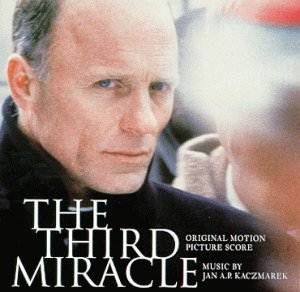
An emotional investment by itself is not enough to make a score effective. Kaczmarek's "The Third Miracle" is a transparently manipulative practice of drama and technique, that would be sufficient were it not for the presentation of grand ideas seemingly for the sole purpose of assaulting them as the audience listens on.
The composer neutralizes enchanting tracks such as the solo piano in 'Frank & Roxanne' with dreary mistakes like his ridiculous manner of combining nightclub double bass and the monophonic singing of the Warsaw Female Choir in 'Domine Jesu.' Unless beatniks raided the church winery, this has no use here. What are immensely artistic and penetrating classical melodies and orchestrations are really so solid that they need only one listen, but reiterating each of them nearly verbatim every few tracks sucks the genuineness away. The music identifies many emotions, but offers scanty musical support for why those emotions are important to the story it attempts (and fails) to shape. Rather than putting itself on 'repeat' it could have done something not expressed in the first 14 minutes. The juxtaposition of greatness with mediocrity, including the dull plainchant 'Before Your Eyes' composed by Kaczmarek and Elzbieta Bieluszko, does nothing but become increasingly irksome toward the end.
Compositional/dramatic unity is an essential part of film music. In order for a score to function for the film, as opposed to merely with it or possibly against it, not to mention functioning as an independent recording like this, the music must be the best it can be. If the underscore fails to uniformly work on its own toward maintaining audience interest in the film, then it is expendable. "The Third Miracle" clouds the differentiation. It is cliché to say 'he weaves a tapestry,' but Kaczmarek does, and he initially patterns it well. But I hope I am not cliché when I say this tapestry has frayed edges, holes, and seriously deserves to be put in mothballs for awhile.
Reviewer
Jeffrey Wheeler

OST
PACIFIC TIME PTE-8520-2 [34:38]
Save around 22% with
the retailers listed at the end
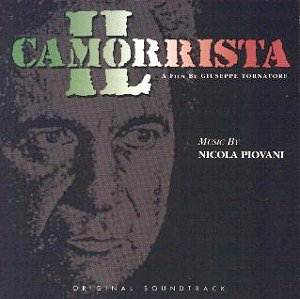
The more I hear of Piovani's work, the more certain I become that the Oscar win for Life Is Beautiful was richly deserved. There's a defined voice at work throughout the series of releases on the Pacific Time label, e.g.: De Eso No Se Habla, Il Sole Anche Di Notte, and Tu Ridi. The only problem that comes of the label's sparse packaging is determining at what point we are enjoying the development of that voice, since no credits in the form of dates are present.
You can hear the prevalent echoes of his style in the recurring doubled piano line of many pieces (e.g. underneath the equally staple high trumpets of "La marcia dei pentiti"). The other telling trait is Piovani's ear for percussive rhythm - something that likens him to countryman Morricone of course. "La cattura" is a superb example of controlled experimentation on a drum set.
The album opens with the title cue that acquaints the ear for the tone of the album. It's a most disconcertingly detuned bunch of instruments perhaps hinting at some form of madness (another drawback of no album notes is having to guess what it's about!). Coupled with cue 2 - "Rosaria" - which is a most entertaining conversation between 2 pianos (one jangle style) you have a full template for the following half hour.
The only changes of pace are for the exciting ensemble dash that accumulates dizzyingly in "Il professore", and a sweet little piece of smoochy jazz stylee in "Moderato slow".
If you haven't caught any of the other scores in the series, this is an ideal introduction to the collection.
Reviewer
Paul Tonks

Ian Lace adds:-
This is the Italian take on the Mafia/gangster movie. Piovani's music is very Italianate, powerful and sinister alternating with the sentimental (although one might imagine this is for the 'Godfather's' family? The score opens, arrestingly with darkly insistent timpani beats marching inexorably forward over biting string chords and the sort of brass figures that can only emanate from Italy - proud yet oddly grotesque. From then on the pressure is unrelenting. A good gripping atmospheric score complete with saloon-style pianola you feel is going to be perforated with gunfire at any moment. Paul has said all the rest.
Reviewer
Ian Lace

OST
VARÈSE SARABANDE VSD-6107 (39:11)
Save around 22% with
the retailers listed at the end

Following last year's two remakes of The Thomas Crown Affair (the official one and Entrapment) Diamonds is a light-hearted romantic-comedy crime-caper, a throwback to the Hollywood of several decades ago. Quite appropriately it marks the return to the screen of two of the finest surviving stars from Hollywood's middle decades, Lauren Bacall and Kirk Douglas. The music is by Joel Goldsmith, and if his father, Jerry is frustrated to forever be in the shadow of John Williams, after two decades of film-scoring, it is equally time for Joel to step out of his father's shadow and be recognised as a major film composer in his own right.
Over its 25 tracks and 39 minutes Diamonds encompasses a great variety of music, from a romantic main theme in similar vein to Rachel Portman's Emma or Mark Thomas' Aristocrats, to the absolutely barnstorming big band jazz of 'Walk Through the Casino' and 'Reno Lights'. In-between there is elegant atmospheric music, fine pastoral writing, and even, in 'Lance's Girl', something like music from an Indian version of Twin Peaks! The closing song might have come from the pen of Eric Idol for some never-made Monty Python movie. Goldsmith's tunes are glorious, the sound, especially on the jazz tracks, fantastically good, and though there is a lot of diverse writing across a lot of tracks, somehow it all holds together to become more than the sum of its excellent parts. (The cheery lad's song excepted).
With The Legend of 1900 and The Talented Mr Ripley, combining jazz and traditional orchestral writing is emerging as a significant trend in film music. Based on the evidence here, it can only be a good thing, for while the movie Diamonds may not last forever, the tracks on this disc are real gems.
Reviewer
Gary S. Dalkin

Conducted by Alfred Newman OST
Brigham Young University Film Music Archives FMA HF 105 (42:52)
Save around 22% with
the retailers listed at the end
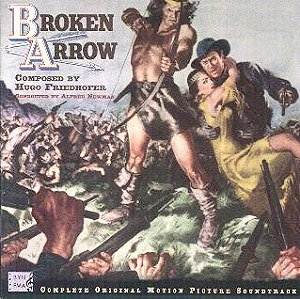
Despite a demonstrated gift for composing, Hugo Freidhofer toiled for years as an anonymous orchestrator for such Hollywood heavyweights as Max Steiner. Erich Korngold and Alfred Newman. Finally given his chance in 1946, he composed The Best Years of Our Lives -- a landmark motion picture score that still ranks as among the greatest works in film music history. Yet even though Freidhofer followed that triumph with other exemplary scores -- The Bishop's Wife, Boy On a Dolphin and The Young Lions come immediately to mind -- he remains one of the least heralded composers from the Golden Age of movie music. In Tony Thomas' book Music for the Movies, the author devotes a chapter titled "The Price of Excellence" to Friedhofer and two others -- David Raksin and Bernard Herrmann -- whose devotion to their art caused them to eschew musical extravagances designed to win audiences' attention at the expense of the film's and score's integrity.
For Broken Arrow , Friedhofer's music is all sinew and muscle - connecting, clarifying and illuminating. William H. Rosar's informative notes to this recent BYU/FMA release repeatedly use terms such as "stark," "bleak," and "sparse" to describe the score. Yes, there is thematic development (a great deal of it) and yes, even melody - but all to one end: serving the story. With the exception, perhaps, of The Best Years of Our Lives, no Hugo Friedhofer-scored film ever left audiences humming a theme. And he was proud of that. Happily, that's not to say Broken Arrow doesn't reward repeated listening. If you work at it, this music can grow on you. One of the first noticeable things about the score is its complete lack of cliches, both of the general Western or "cowboy" style and specifically of standard Hollywood "Indian" music. For example, Friedhofer doesn't spotlight a "war drum" until the 14th cue ('Warriors Return.') Because it told so much of its (true) story from the Indians' perspective,
Broken Arrow was something different for 1950 movie audiences. To complement this, Friedhofer wrote not one but four separate Indian themes, the primary one being 'Cochise,' a muscular statement depicting the Apache leader's mutually noble yet war-like stature. Friedhofer's main title cue uses this theme along with one he wrote symbolizing the peace treaty to illustrate the story's conflicting elements. Among the several other themes, I have found myself most immediately taken with the one for Sonseeahray, the Indian woman who falls in love with James Stewart (as Jeffords, the white Indian agent who brokers peace with Cochise). Typically, Friedhofer does not use this theme in the scene that introduces Sonseeahray's character, waiting until later when the love interest develops. For their wedding ceremony, 'Primitive Ritual,' Friedhofer manages to evoke a sense of archaic beauty from simple instrumentation beginning with a solo English horn, followed by a duet for flutes. Only later in this, the score's 20th cue, do we finally hear the film's love theme ('The Lovers.') The subtle beauty of this music turns tragic later, when Sonseeahray is slain and the music mirrors Jeffords' anguish.
Broken Arrow contains occasional hints of One Eyed Jacks, Friedhofer's crowning achievement among his Western scores, which would come more than a decade later.
This BYU Film Music Archives Soundtrack Series release is taken from the original optical studio music tracks, most of which is in stereo although the film was released in mono, and the sound is quite good despite a small amount of detectable hiss. The casual soundtrack collector might prefer to pass on this, but for Friedhofer fans - and there ought to be more of these -- this is a must.
Reviewer
John Heuther

Paul Tonks is enthusiastic:-
It's always quite daunting trying to comment on the revered classics. A fifty-year-old film has naturally been talked to death in most senses, and a score as splendid as this puts a writer to task in coming up with superlatives enough.
So instead of drooling loquaciously over Friedhofer's stunning ability to capture environment without cliché (e.g. the rousing - not amusing - pounding Indian drums of "Tucson and Cochise"), this reviewer would like to recommend this album for its outstanding restoration and presentation.
Although the sound passes from stereo to mono, and there is the occasional crackle or pop (e.g. end of "Narration and Opening"), there's something made all the more emotive by these limitations. The sweet sweet strings of "Tucson and The Lovers" says something more in its aurally dated form than any pristine digital mix might. The Brigham Young team are never apologetic for the quality of the recordings, but unlike the near inaudible She, this is nothing to apologise for.
Packaging, illustration, quality of penmanship, and a charitable cause make this an essential.
Reviewer
Paul Tonks

James Sedares conducts the new Zealand Symphony Orchestra
KOCH INTERNATIONAL 3-7302-2H1 [60:28]
Save around 22% with
the retailers listed at the end
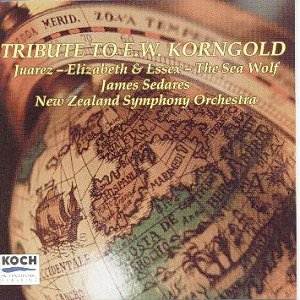
Incredibly, this collection has taken three years to reach us. I understand that it was originally intended to include material from The Sea Hawk and the release was held up pending this projected inclusion, however circumstances prevented completion. It was recorded in Wellington New Zealand in March 1997 and Tony Thomas's notes, reproduced without any editings, are geared to the Korngold centenary that occurred in 1997. The two main items on the disc are welcome extended suites from Juarez and The Sea Wolf both lasting 27+ minutes. Just over three minutes of Elizabeth and Essex are sandwiched between artfully bring the total playing time to just over an hour.
I have to confess that Juarez had been my least favourite amongst Korngold's scores. I always felt it to be too saccharine and rather fuzzy and unfocused. While I am still not 100% converted, James Sedares' lively reading and presentation of this music has certainly opened my ears. Juarez relates the tale of French Emperor Louis Napoleon's (Claude Rains) ill-fated adventure in Mexico when America intervened and obliged him to withdraw abandoning his Mexican puppet emperor Maximilian (Brian Aherne) and his wife, Carlotta (Bette Davis). Carlotta, returning to Paris, pleads in vain with Louis Napoleon and consequently goes mad with grief - Maximilian, is executed by the Juarez government. After the imposing Main Title there is an evocative 'Trip Through Mexico' followed by an exciting 'French Battle Montage' and 'Guerilla Warfare' in which bloody skirmishes are very apparent. 'Carlotta Weeps' and 'The Child and Adoption' allow some romance and intimacy and 'The Mad Scene' and 'The Dream' are eerie and harrowing. The remaining cues follow the tragedy to its conclusion -'Maximilian's Surrender', 'Marche Funebre', Church Bells and the victorious 'Juarez'. The suite includes all Korngld's major themes. Aside from the use of the well-known 'La Paloma' (performed here sounding beautiful and romantic with an uncredited soprano), Korngold eschewed ethnic music which, in this case, I think, was a pity because Mexico, of all locations, has such strong musical associations. For me, this omission probably gives that unfocused quality I mentioned earlier.
The short Elizabeth and Essex suite includes: Main Title (without Gerhardt's swagger and polish), the equally thrilling 'Fanfare and Essex March' (better) and End Title.
The highlight of this disc is this extended suite for The Sea Wolf. A bleak, dark tale based on a novel by Jack London, it tells of Wolf Larson (Edward G. Robinson), the sadistic, psychotic captain of the sealing schooner, The Ghost who picks up two survivors from a wrecked ferry in San Francisco harbour - Humphrey Van Weydon, a writer (Alexander Knox) and escaped convict Ruth Webster (Ida Lupino). Larson refuses to put them ashore and they are therefore obliged to continue on with the voyage. Already on board is another escapee from the law, George Leach (John Garfield) and a crew of discontents amongst who is the vicious cook (Barry Fitzgerald). In the course of the voyage, Van Weydon discovers that despite his bullying, Larson is a cultured and well-read man. When the Ghost is attacked by Larson's vicious brother, Larson locks Leach in his cabin. The ship is sinking but mortally injured Van Weydon makes a deal with Larson to go down with him if Leach is allowed to escape with the girl so permitting something of a happy ending.
Much of Sol Polito's dramatically lit photography is of a Ghost shrouded by mist and rain and therefore not surprisingly Korngold delivers some very evocative music that evokes not only such hostile conditions but also the turbulent mindset of Larson erupting with full force in 'Larsen's book' and 'Escape and Storm'. This is bleak music indeed - yet totally riveting -and quite unique and unusual Korngold; the only relief being the Love music (with its apposite harmonica solo) which has an aura of despondency and hopelessness as well as tenderness.
The packaging is good with excellent notes by the late Tony Thomas and a touching tribute to Thomas by Korngold's biographer Brendan Carroll.
Reviewer
Ian Lace

Gary S. Dalkin adds:-
There is no mistaking his master's voice. With Max Steiner, Erich Wolfgang Korngold all but invented the sound of Hollywood film music, and his influence persists today whenever a symphony orchestra is assembled to perform the music of John Williams, Jerry Goldsmith, James Horner and countless others. All the more remarkable then, that Korngold considered himself primarily a concert composer, and only wrote a total of 19 film scores. Consequently, more than most, Korngold's film writing forms a continuum with his 'serious' work, his writing for whatever venue always thoroughly through-composed, his film work usually able to stand alone away from the silver screen.
Three films are featured. The album opens with a 27-minute suite, divided into 16 parts, from Juarez (1939). This is fiery and exciting music, full of action and swashbuckling adventure, and with characteristically fine main and love themes. The Spanish flavour is not as strong as might be expected, for essentially Korngold wrote Korngold, no matter the subject. One oddity is that, although the disc is lavishly packaged, with stills and extensive booklet notes, including full documentation of the orchestral players, there is no credit for the soprano voice which appears on the interpolation of the song 'La Paloma' into track 8: 'Farewell'. Further, although the notes on Korngold and Tony Thomas are informative, the memoir on the latter appears with no explanation of any direct connection between the man and the CD. Presumably Thomas arranged the suites recorded here.
Next is a comparatively short suite from The Private Lives of Elizabeth and Essex (1939), and if one wanted to be really pernickety, it could be argued that in these days of 75 minute plus albums, we could have been offered a little more than 6 minutes. This suite, offering the opening and closing music, a fanfare and march, is very much in the mould of The Sea Hawk, and is a delight while it lasts. However, given that many Korngold aficionados will already have a recording of the complete score, of rather more interest is a 27-minute suite from The Sea Wolf (1941). Yet again we are given maritime adventure, but this time of a darker hue for this wartime tale of desperate peril. Suffice to say, it is hard to imagine anyone with a love of Korngold's film work being disappointed by this suite, while it has many qualities which may appeal to those who find his music sometimes overblown or sentimental. If you thought the composer specialised only in rousing heroics and sweeping romantic melodies you may be surprised to find the almost Herrmannesque atmospherics of 'The Fog' and 'The Shipwreck', while even the 'Love Scene's is far more lyrically understated and pastoral than comparable themes from Devotion or King's Row.
The criticism that has sometimes been levelled against James Sedares and the New Zealand Symphony Orchestra, particularly for their superb disc of Miklos Rozsas El Cid, is here utterly confounded. This is simply a magnificent recreation representation of Korngold's music, presented not on thin 'authentic' distorted mono sound, but as the composer can only ever have dreamed of, with rich and dynamic stereo sound, with utterly committed and finely accomplished performances. There are still too few recordings of 'Golden Age' film music, and a recording of this calibre is to be warmly welcomed by anyone seriously interested in cinema as a musical art form.
Reviewer
Gary S. Dalkin

Caspar Richter conducts the Bruckner Orchester Linz
ASV CD DCA 1074 [61:45]
Save around 22% with
the retailers listed at the end
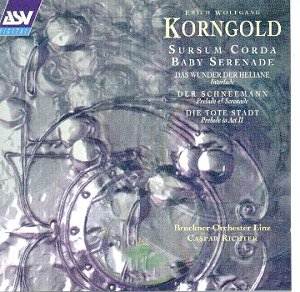
Poor James Horner is always getting stick for self-quotation (and quoting others) but, of course, self quotation has always been practised by even the greatest composers including Bach, Haydn, Mozart Beethoven and Schubert - and Erich Wolfgang Korngold. If you ever wondered where all his glorious music for The Adventures of Robin Hood came from, this album provides part of the answer - from material in his Sursum Corda composed in 1920.
Sursum Corda was dedicated to Richard Strauss, Korngold's mentor in his early years.
As Brendan Carroll says in his booklet notes, it is "a highly concentrated and difficult work, its constantly shifting metre making it a nightmare for conductors..." Richter gives a crisp and bravura enough reading of a work that has a tremendously wide compass embracing the heroic and romantic, a fairy-lightness contrasted with dramatic shadows and eerie, mysterious, even harrowing material. Yet in places I felt that it threatened to defeat him.
This adventurous ASV programme includes dramatic music from two of Korngold's operas that could easily have served as film music. From his most successful opera Die Tote Stadt (The Dead City) we have the magnificent Prelude to Act II which is really a miniature tone poem. It is a vivid evocation of the medieval city of Bruges with its tolling bells and the wind coursing through its streets and canals, and its procession of nuns. The opera concerns a man who is obsessed with his beautiful dead wife and who then meets a young dancer who looks exactly like her. The Prelude opens, darkly, with the voice of the dead wife singing, "You are gripped by life, you are attracted by the other one. Look, look and realise..." The Interlude between Acts 2 and 3 of Korngold's 1927 opera Das Wunder der Heliane (The Miracle of Heliane) is a massive funeral march. Sombre brass fanfares and swirling string glissandi create the grim yet strangely erotic mood heightened by the central love music reprised from Act 2.
In more cheerful mood, Baby Serenade, first performed in 1932, was a celebration of the birth of his second son George Korngold (who would go on to produce, with Charles Gerhardt, so many great classical film score recordings). Comprising five movements, Baby Serenade is scored for 14 wind instruments (including jazz trumpet and three saxophones), banjo, harp, piano, and string orchestra. It begins with 'Baby Enters the World' in a joyful whirl; then 'Song: It is a good baby' is a sweet lullaby; while 'It has really beautiful toys' evokes the baby playing with his toy soldiers to the tune of the Radetzky March. 'Jazz - Baby tells a story' is an amusing perpetuum mobile to create the effect of the little child talking endlessly and repeating himself. The final 'And now he sings himself to sleep' is another gentle lullaby and we hear a church bell as he nods off. These little pieces are played with humour and sensitivity by the Linz orchestra, and the cheeky sting in the tail of the last movement is very appealing.
The programme also includes two brief but enchanting pieces from The Snowman - the Prelude and Serenade. It is incredible to think that these two assured pieces were written by an 11-year old boy.
Recommended
Reviewer
Ian Lace

Theodore Kuchar conducts the National Symphony Orchestra of Ukraine.
NAXOS 8.559033 [67:43]
Save around 22% with
the retailers listed at the end
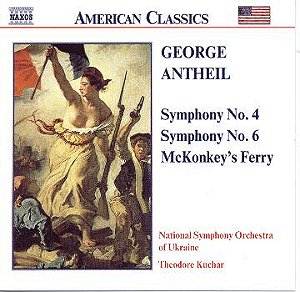
George Antheil is remembered by film music enthusiasts for his scores for such films as The Plainsman (1938); Spectre of the Rose (1946); Knock on any Door (1949); In a Lonely Place (1950); and The Pride and the Passion (1957). He is also famous, or infamous, as the composer of the 1925 Ballet Mécanique composed for an orchestra consisting of percussion instruments, player pianos, electric buzzers, and even an airplane propeller.
George Antheil was born in Trenton, New Jersey. He studied for a while with Ernest Bloch (his studies ended prematurely when his cash ran out) before moving to Paris where he entered a coterie that included James Joyce, Ezra Pound, Ernest Hemingway, Man Ray, Satie, Picasso and many others. His Ballet Mécanique caused one of those Parisian riots that we hear about so often, but it preluded Antheil's withdrawal from things avante garde in favour of more appealing and lucrative work in the musical-theatre and film music communities back home in New York.
In 1940 he became a war correspondent (at other times he had been employed as a lonely-hearts columnist and wrote articles on endocrinology). His Symphony No. 4 was written during this period. Of it he commented that it was - "Written...during a period when the entire future of the world hung in the balance, its first movement undoubtedly reflects my tense and troubled state of mind while writing it: I had no actual program in mind; but every day, I was watching the news, from Stalingrad, from Africa, from the Pacific...the second movement is tragic - news of Lidice and the horrors of Poland had just come in - while the third; the Scherzo is more like a brutal joke of war. The fourth, written after the turn of the tide at Stalingrad and our landings in Morocco, heralds victory.
The first movement is tense and troubled indeed, a powerful astringent and gritty statement heightened by many changes of mood and tempo. At times its many complex strands scream out as a brutal cacophony of war. The second movement has a fearful, nervous lyricism and I was reminded very much in places (as I was to a lesser degree in the opening movement) of the film music of Bernard Herrmann. I wonder if he knew this symphony? This second movement ends on a chill and harrowing note. The Scherzo is cold mechanical and devilish; I was reminded of Vaughan Williams's 4th and 6th symphonies although the overall similarity in this symphony leans more towards Shostakovich and Prokofiev. As Joshua Creek says in his erudite booklet notes, of the closing Allegro non troppo, 'Antheil's work as a film score composer is nowhere more evident than in the fourth movement. One can practically envision it as a soundtrack to a newsreel. Grim march rhythms are juxtaposed with triumphant tuttis. Dozens of tempo changes serve to amplify the episodic effect...'
Antheil's 6th Symphony (premiered in February 1948), was inspired by Eugène Delacroix's painting, 'Liberty Leading the People' (see the cover design of this CD). This is another powerful symphony. A quirky allusion to 'The Battle Cry of Freedom', in the flutes and upper woodwinds, is heard early in the brusque and abrasive first movement, before a rather Prokofievian moto perpetuo theme in scurrying eighth notes is introduced. The second movement is a sombre reflective slow waltz that is rather Satie-like while the Trio sounds vaguely Mahleresque. The concluding, scampering rondo is at least a bit more cheerful and was described by Antheil as '...the triumph of joy and optimism over despair.' Post war blues? But at least there is some jazz and syncopation here to liven things a bit.
Antheil's Concert Overture, McKonkey's Ferry (1948) was inspired by the image of George Washington's crossing of the Delaware on Christmas Night 1776. Again the work's theme is victory and freedom. The music is very evocative of the troops and gun carriages crossing the river. There are telling little vignettes - perhaps a boy soldier proudly playing his piccolo, for instance. But besides the swagger and bravado there is a note or two of anxiety expressed by the strings, and brief tender passages as though the troops might be thinking of home.
Not an easy album for there is much very red meat here, but this is a rewarding experience for the adventurous music lover and the performances are first rate.
Reviewer
Ian Lace

Anonymous 4; with Susan Narucki (soprano); Corrie Pronk (Alto); Frank Hameleers (Tenor) and Henk van Heijnsbergen (bass-baritone). Netherlands Radio Choir; Netherlands Radio Philharmonic conducted by Steven Mercurio.
SONY SK 62006 [70:40]
Note: This is not a new release: this recording was made in 1995
Save around 22% with
the retailers listed at the end
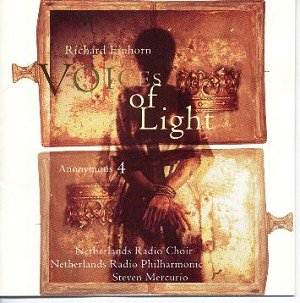
I am indebted to my colleague reviewer Gary S. Dalkin. He mentioned this album and especially the 'Pater Noster' from Voices of Light in his commentary about the film music of 1999 on Film Music on the Web.
Richard Einhorn's (b. 1952) varied compositions include numerous film scores. His Voices of Light is an opera/oratorio for voices and amplified instrumental ensemble in celebration of Joan of Arc. It was originally inspired by the great silent film, The Passion of Joan of Arc, which influenced the work of such filmmakers as Bergman, Fellini, Hitchcock and Scorsese. All the prints of this film were thought to have been consumed in a series of disastrous fires; but then, miraculously, an original print was found in Norway in 1981. However, Angels of Light can stand alone, without any visual images. The libretto is a patchwork of visions, fantasies and reflections assembled from various ancient sources, notably the writings of medieval female mystics like St Hildegard von Bingen, Blessed Angelo of Foligno and Marguerite d'Oingt.
It was only in 1920, nearly 500 years after her death that Joan of Arc (born in 1412) was declared a saint, the only saint who had been excommunicated and burnt at the stake.
In the middle of the Hundred Years War, much of France was occupied by the English and their Burgundian allies. Joan, an illitereate, virginal shepherd girl was called to a divine mission by angels. She persuaded Charles the uncrowned king of France to support her; she raised an army and destroyed the besieging armies around Orleans and went on to other victories that culminated in the coronation of Charles VII in Reims in 1429. However after she failed to take Paris, her fortunes declined and she was taken prisoner by the Burgundians, handed over to the English, tried by the inquisition, and tortured and burnt at the stake.
Einhorn has fashioned a fifteen-movement work from some of these events, scored for soloists, chorus, orchestra, with the telling addition of the churchbell of the village of Domremy, Joan's birthplace. Commenting on the crucial role of Joan herself, Einhorn remarks, "Since no one knows what Joan looked like, I decided no one would know much about her singing voice: accordingly, Joan's "character" is sung neither in a soprano nor alto range, but in both simultaneously, with simple harmony and in rhythmic union. In our CD, Joan is exquisitely portrayed by the members of the Anonymous 4."
Einhorn's music glows in simple transparent textures. The decision to use Anonymous 4 to portray Joan was inspired. The simple unassuming 'Victory at Orleans' in which Joan writes, "Jehanne...the Maid sends you news from these parts: that in one week she has chased the English from all the places that they held along the Loire river..." is most affecting. So too, is 'The Final Walk' in which Joan's protestations of her innocence is counterpointed poignantly and dramatically by those bells, and the final 'Epilogue' in which Joan's writing are again quoted: "So God, King of Heaven, wills it; and so it has been revealed by the Maid..."
Throughout the work the attention is gripped with music that is dramatic and deeply moving. I would just mention the 'Pater Noster' with its beautiful, luminous setting of the Lord's Prayer, the atmospheric opening of 'Sacrament' with its distant pealing bells and lovely choral settings; the other-worldly radiance of the closing of 'Abjuration', "Lord, that which I do, I do only to find you"; the quiet beauty of the 'Karitas' ("Love overflows into all things...") and the glorious 'Anima'.
Very warmly recommended
Reviewer
Ian Lace

OST
FILM SCORE Silver Age Vol. 2 No.8 [75:29]
Save around 22% with
the retailers listed at the end
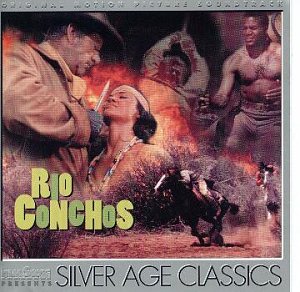
Rio Conchos followed in the wake of the John Wayne vehicle, The Comancheros (music on Film Score Monthly FSMCD Vol 2 No. 6) in that both films shared the same scriptwriter and novelist, Claire Huffaker and there were a number of common plot threads and character archetypes. But Rio Conchos was altogether a far darker, more hard-bitten tale with some pretty unsympathetic characters led by a grizzled Richard Boone as Major Lassiter bent on avenging the murder of his family by marauding Apaches.
Jerry Goldsmith, who already had substantial experience scoring for westerns, provided a blistering score that broke new ground for the genre. Vivid, gritty, colourful, full of jagged rhythms and sophisticated orchestration including the imaginative use of a panoply of percussion giving the score an air of menace and Latin colour appropriate to the film's Mexican locale, the music owes more to Stravinsky and Bartok rather than Copland. Here was one of the first psychological (as well as action) approaches to scoring a western.
The opening track catches one's breath. Tambourines, suggesting wild, clanging spurs, whiplashes, and scratcher comb add barbaric underlining to a rather mournful, slightly syncopated harmonica folk-like melody. Other cues continue the mood of flinty, brooding malevolence. Castanets and guitars, snearing brass, in exciting varying rhythmic patterns, add vibrant colour to many tracks. There is a palpable coiled rattlesnake-like menace attached to those cues associated with the Apaches. I was impressed with the excitement and exuberance and then the quiet build up of tension of 'River Crossing' the treading rhythms of the colourful percussion instruments is particularly good. So too, is 'The Aftermath' with its equally telling use of even more colourful percussion; and 'Wall of Fire' is breathtakingly fast-paced thrills.
Quoting the release that accompanied my review copy, "The existing CD of Rio Conchos is a re-recording conducted by the composer for Intrada Records in 1988. FSM's new release features the original soundtrack - never before released - as recorded for the film at 20th Century Fox in 1964. The recording is complete, in chronological order, and in excellent mono sound with eleven cues not included on the Intrada CD, including a great deal of moody, flamenco-based material for Tony Franciosca's character and a lengthy bravura action cue ('Drag Race') written largely for percussion. Bonus tracks include a seldom-heard vocal version of the title theme and five tracks of score remixed in stereo, focusing on the action-packed climax.
This is a thrilling score of infinite variety within a limited overall canvass and one that holds the attention through its 62 minute length. As usual the FSM documentation is thorough and fulsome.
Reviewer
Ian Lace

[This Rio Conchos CD is available exclusively from the magazine and website (www.filmscoremonthly.com) for $19.95 plus shipping: Film Score Monthly, 8503 Washington Boulevard, Culver City, CA90232. Phone: 310-253-9595; Fax: 310-253-9588; Lukas@filmscoremonthly.com ]
CITADEL STC 771144 [73:47]
Save around 22% with
the retailers listed at the end
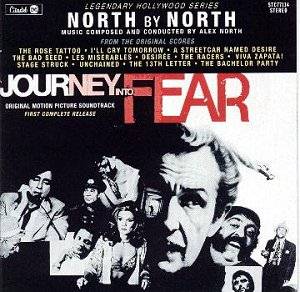
Romantic love music is hardly the first thing that comes to mind when one thinks of the work of Alex North. One remembers the jazz influence, the harshness, the grit and the effective dissonances -- but love music? Well the producers of this album think it is worthy of our attention. I am not so sure. True, there are musical subtleties that did greatly enhance character and plot development, in the films, but they are altogether too subtle to make an enjoyable listening experience on their own as here. One comes away with the feeling of a sameness pervading the whole 12 track collection with an overuse of sweet high strings. With the notable exception of the well-known tune from Unchained and a very few other of these 12 tracks, there are no notable melodies that are essential for romance. Victor Young was far more successful in this context. For the record the scores covered are: Unchained; The Racers; Viva Zapata! (with some interesting Latin/Mexican rhythmic inflections); The Bad Seed (which is really an innocent lullaby for a monster of a child); A Streetcar Named Desire (which does have plenty of decadent atmosphere and sweet corruptness); The Bachelor Party; The 13th Letter; Stage Struck; I'll Cry Tomorrow; Les Miserables; The Rose Tattoo (better than most); and Desirée.
With Journey into Fear we are back in more familiar Alex North territory - dark, snarling, gritty, relentless all adjectives that are applicable to Main Title with its death rattle vibraphone figures and staccato chords scale chords and abrasive dotted rhythms. This score reeks of malignancy and and deep dank pools of corruption with the odd relaxed reflective or romantic moment. Actually North comes up with one of his best romantic melodies in 'Loneliness'. Slow, intimate, smoochy material also makes up 'Troubled Romance' with an occasional surface tremour. 'Native mood' offers more variety - this time an exotic Arabian dance that conjures scantilly clad saying dancers dancers with their finger cymbals. Not top drawer North by any means but nonetheless a very worthwhile acquisition for North enthusiasts. The booklet notes are very good
Reviewer
Ian Lace

The Vienna Concert Orchestra conducted by Heinz Sandaur OST
CITADEL STC 77101 [42:44]
Save around 22% with
the retailers listed at the end
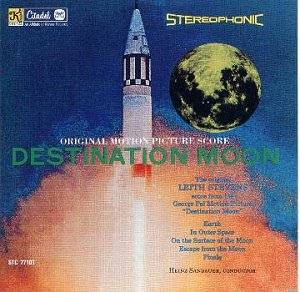
Destination Moon was one of the first 'modern' science fiction films and I remember playing truant off school to see it up in the Gods (the highest gallery) in a cinema in Nottingham in England's East Midlands. I was mightily impressed and was so sure that we would reach the moon in reality within 25 years that I earned myself the nickname 'Spaceship!' That's early commitment and enthusiasm for you!
George Pal's Destination Moon (1950) was the first feature film to tackle the problem of realistically visualising a scientifically accurate (for the times) simulation of an actual flight to the moon. Hitherto there had only been risible cardboard cut-outs such as those featured in the Flash Gordon films. For Destination Moon, the scientific and space experts were called in such as famed space artist Chesley Bonestell. For the music, Pal turned to Leith Stevens whose contribution matched the awesome visuals. Stevens was later employed by George Pal to score his later Academy-Award winning films: War of the Worlds and When Worlds Collide. Stevens scored for more close on fifty feature films including The Wild One and The James Dean Story. At the tiome of his death in 1970, he was head of music at Paramount Television.
Leith's richly textured and atmospheric music from the film as presented here is in five substantial cues. It begins with 'Earth' that is concerned with the preparations for the flight. This is slow imposing music of grave grandeur, earnest, anticipatory and somewhat anxious. There is a mechanical feel about some of the material as the rocket's tweaking is concluded and a brief element of humour for the comic relief of the Dick Wesson character. The cue ends with the explosive sound effects of the blast-off.
The second, lengthy and complex cue 'In Outer Space' opens in grave grandeur, with material given to the lower instruments, suggesting the awesome vastness and blackness of space. A lighter second subject on the violins evokes the beauty of the star-speckled heavens. More disturbed passages, influenced by modern Russian composers like Shostakovich, underline the psychological stresses experienced by the crew on the journey. Bouncy figures, sounding a little oriental, underline the curious feeling of weightlessness as the crew spin about the cabin when free of their harnesses. Anxious figures reappear as preparation for touch-down on the moon begins. The ethereal beauty of the space music is as impressive as anything that John Williams would later pen. The most interesting feature is the introduction of a theme that is very reminiscent of David Raksin's Laura music - a very potent choice for the moon as beautiful but enigmatic and dangerous - as a hostile environment. This theme, in variation form, will now dominate the score.
The tempo becomes brisker for 'On the Surface of the Moon' for the excitement of the actual landing and slow again as the crew appreciate the still, silvery beauty of the lunar landscape. Long woodwind passages are interrupted by sudden chords as the men bound across the moon's surface in great 100 ft strides. In 'Escape from the Moon' the material underscores the anxieties of the spacemen in preparing for the take-off back to earth for much equipment has to be jettisoned before they can leave the moon. This another substantial and lengthy cue; evocative and tense and exciting. 'Finale' takes the spaceship back to Earth and the score ends jubilantly as the end of the adventure approaches.
A very impressive score
Reviewer
Ian Lace

OST
Colosseum CST 8081.2 [42:29]
Save around 22% with
the retailers listed at the end
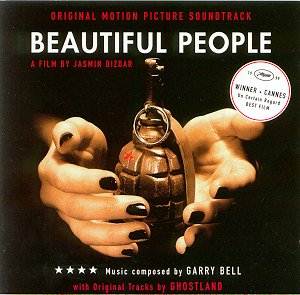
The mixture may be too eclectic to make for a wholly pleasing listen, but this is a surprising collection of ideas. Composer Bell works in-between tracks from UK band Ghostland, but for the most part both these inclusions and the sourced songs are at least fun in their own way. The director comments in the booklet that he sought to portray the fast-paced London lifestyle coupled with the ethnic elements of the story. That would seem accomplished by the complicated Balkan rhythms of Bell's "Churchill's Mistake" and "Pero's Walkman". These are frenetic fun.
Ghostland's contributions are a little more diverse. "This Is War My Friend" follows the principle of the above and adds a strong beat for contemporary measure. But it is in the contemporising that the album loses cohesion, with a track like "Talkin' ' Bout Life" being just too darned techno to sit comfortably in its surroundings. It's a mixed affair, but with a little programming could make for an humorous party background accompaniment.
Reviewer
Paul Tonks

Kostas Anagnostou adds:-
Beautiful People narrates everyday situations in which Londoners encounter Bosnian refugees, and tries to capture the energy and confusion caused by these cultural clashes.
Apart from Gary Bell, the English band Ghostland was summoned to score the movie. Both Bell's and Ghostland's music is appropriately painted by the colours of Balkan folk music and its motifs, heavy on brass, are, in a way, similar to Goran Bregovic's 'Underground', providing a sufficient ethnic flavour to the movie. While Bell concentrates mainly in weaving the right ethnic tapestry, Ghostland dwells a little deeper into the emotions as in 'She's Beautiful' and 'That War is my Friend' to reveal the human side of the story. This doesn't mean that Bell's music is devoid of sentimental moments though, such as in 'Jag Jag, Sleepy Sleepy', based on a simple synthesised motif, mixed with synthesised voices. Perhaps the most recognisable theme in the score is 'Davni Chasy', a traditional piece that formed the basis for a very famous song.
Various songs are scattered throughout the score (fortunately not many), some pop and some Balkan which somehow do not blend too nicely on the CD, although they serve their purpose of representing the different cultures. Other orchestral source music completes the album.
All in all, you will probably enjoy this score if you are into Balkan music and if you liked 'Underground', although it lacks the genuine Balkan flavour and variety of that score. Otherwise it is not a very memorable listening experience. Reviewer
Kostas Anagnostou

Hummie Mann feature
OST
Hummie's own Promotional [54:04]
Save around 22% with
the retailers listed at the end
About Promotional CDs
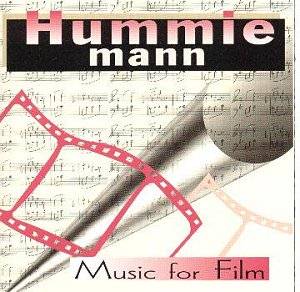
This compilation covers 18 of Hummie's scores and demonstrates his great versatility and his melodic gifts. It begins with his lovely music from Language of the Heart that is very classical in style - reminiscent of Mendelssohn with solo violin against tremolo strings; all grace and charm. It ends very differently with a creepy electronic score for Falltime. In between I was especially impressed with his 'The Lady Has Style' a 1940s-style vocal, with moody clarinet, from The Red Coat; and the evocative 'Maggie Goes to Scotland/Hellicopter' from Year of the Comet. The latter commences with a beautiful long-breathed romantic melody before the music segues to more urgently paced material with the unusual colours of pennywhistle and hammered dulcimer against an orchestral backdrop to signify the Scottish locale.
Probably the best known film in the collection is Robin Hood: Men in Tights for which Hummie scored tongue-in-cheek music rather like Die Hard in Sherwood Forest with the odd swipe at Korngold et al. Mann also provided some unusyual and tense music for more dramatic stories. Probably the best of these in this collection is the oddly orchestrated (autoharp, ceramic flute and guitars) Benefit of the Doubt giving a disturbing and unsettled, yet poignant atmosphere for this psychological thriller.
A useful introduction to the talents of Hummie Mann
Reviewer
Ian Lace

OST
VARÈSE SARABANDE VSD-5365 [35:19]
Save around 22% with
the retailers listed at the end
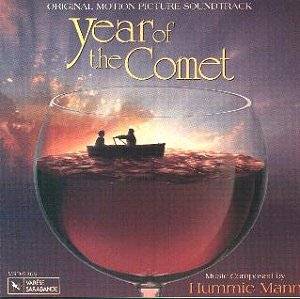
It was with some surprise I noted director Peter Yates' comment that this is Mann's first studio feature score. For some reason the Mel Brooks connection makes the name seem to extend further than 1992. Of course, the second aspect of my surprise is the more important - in that it's a professional and enchanting work through and through.
What serves to enchant is the choice of instrumentation to portray Penelope Anne Miller in Scotland. There're no bagpipes mercifully (- would have been inappropriate to the gentle tale), but instead a subtle use of pipe and drum. "Maggie Goes To Scotland" is a quiet opening that suddenly turns locale setting with pipes and sprightly rhythms. The continued use of the ensemble occasionally strays the listener from its Scottish association into a temporary mediaeval setting. "Driving Through Scotland" is like some courtroom dance.
When the score turns to dramatic counterpoint, the stylistic choices are again pleasantly surprising. Any cue named "Helicopter Chase" ought by now to conjure cacophonous connotations, but there's no thumping beat or guitars here. Instead a conversation for pipes over a complicated string and tambourine melange. Later, the finale as "Philippe Flips Out" is an inverted and insane waltz.
Charming to the last, this is a 'debut' I kick myself for having missed.
Reviewer
Paul Tonks

OST
PROMOTIONAL HMCD-002 [54:54]
Save around 22% with
the retailers listed at the end
About Promotional CDs
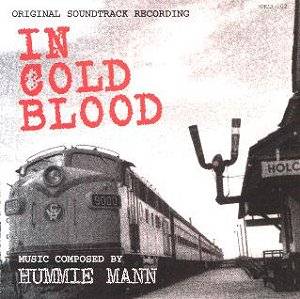
My over-riding impression after a near hour is of having listened to a Ry Cooder / new age fusion. It's extremely hard to highlight one track from another - something perhaps both good and bad in retrospect. The use of bottleneck blues guitar sticks in the mind the most, but otherwise this is really the very lightest of meals with very little aftertaste. A marked contrast to Year of the Comet which I reviewed immediately prior.
Reviewer
Paul Tonks

music from the mini-series, conducted and orchestrated by the composer with additional orchestrations by Ira Hearshen & Tim Hulting
PROMOTIONAL HMCD-1000 [61:21]
Save around 22% with
the retailers listed at the end
About Promotional CDs
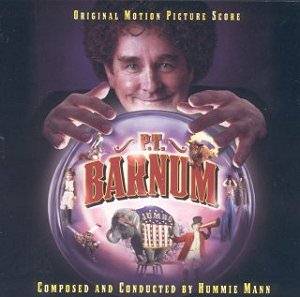
Director Simon Wincer's career includes the hugely successful mini-series Lonesome Dove and the box-office smash Free Willy. However, following the commercial failure of the extremely expensive The Phantom his six most recent productions have all seen him back in television. P.T. Barnum, which stars Beau Bridges and George Hamilton, is the latest lavish Hallmark mini-series, and it is exactly as the title suggests, a biopic of the famous master showman. The series has received extremely mixed reactions, but one thing is certain, Hummie Mann has contributed a most attractive score.
Mann has been a prolific composer for American television over the last decade, and based on the evidence here it is only a matter of time before he becomes better known. As the CD cover quotes "Music by Hummie Mann is rousing and festive in the grand tradition of John Philip Sousa and a perfect fit to the circus like atmosphere of the story" - Variety. This is a perfect description of the score, though perhaps a surprisingly small amount of the music directly evokes the Big Top. What there is aptly captures the circus mood, though far more of this writing falls into what might best be termed 'classic Americana'. Remove the jolly circus themes and this could be the music for a pastoral, slightly melancholy modern western, something in the lineage of Barry's Dances With Wolves, Broughton's O Pioneers! and Blumenthal's General Sutter. In fact, more than anything the beautifully crafted lyricism of P.T. Barnum reminds me of General Sutter. The tracks have rather clumsy titles, but 'Newspaper Article/Charity's Illness/Road Show/Charity Dies' has an especial wistful loveliness, while elsewhere much of the writing richly captures the sense of adventure and boundless possibilities of a young America.
As a CD the disc is a little repetitive, with considerable use made for over an hour of the individually excellent main themes, but even so this is a fine document of a very beautiful and appealing score. Don't be put-off by assuming this is an album of circus music, rather aficionados of the Western will find great pleasure in this album, with even the festive tunes bringing to mind as much marching bands through small towns in the early reels prior to the big gun down. Here is a fine place to start exploring the work of a most talented composer.
Reviewer
Gary S. Dalkin

OST
PROMOTIONAL HMCD 001 [36:48]
Save around 22% with
the retailers listed at the end
About Promotional CDs

Hummie Mann has for many years been one of Hollywood’s top orchestrators. His TV credits include Fame, The Simpsons, and Moonlighting and his films: The Addams Family; A Few Good Men, The Prince of Tides and City Slickers.
As a composer, he has scored: Year of the Comet, Benefit of the Doubt, Box Office Bunny (the first Bugs Bunny cartoon to be released to theatres in 26 years), and for the Rebel Highway and Picture Windows series. He also scored Mel Brooks’ film, Robin Hood: Men in Tights.
It was natural therefore, that Mel Brooks should go to Mann for the score of Dracula, Dead and Loving It (1996). Wisely, Mann created a "serious" gothic score against the inanities of the satirical plot. He confessed that he saw many Dracula films and researched the musical approaches of other composers. "I listened to all the other Dracula scores: John Williams’, the Hammer score, Wojciech Kilar’s one for Coppola… I tried to come up with my own twist…" Mann’s large gothic-sounding score is written for a substantial orchestra of 87 musicians and a choir of 16 singers, multi-tracked. "I played toward the power of Dracula, his ability to control people through hypnosis or move objects with a wave of his hand – to reinforce the idea that he was a force to be reckoned with."
His main theme is full of grandeur and is darkly sinister yet vaguely heroic. This theme has a little five-figure tailpiece that is at the same time not only slightly comic and satirical but also suggestive of fluttering bats. This is a neat and clever touch. Mann’s music captures the sinister elements of the story but it also suggests the essential loneliness of Dracula and his yearning for love. The score is often very sensual and voluptuous. For the ball scene Mann creates comically manic arrangements of Villoldo’s famous El Choclo tango and Liszt’s Hungarian Rhapsody No. 5 and contributes a very convincing Bohemian-like folk dance of his own. Earlier the score had also included some Bohemian gypsy music for the villagers.
An entertaining score
Reviewer
Ian Lace

 |
Search the Crotchet database below |
| Discs
on these pages are offered for sale. There is also a page of search
engines from a selection of on-line retailers
here.
Please support this web-site by buying your discs here. Disclaimer: Every effort is made to make sales links to the correct disc but, in the end, you must take responsibility for checking that what you are purchasing is what you want. Some of these discs were not actually available for sale at the time of posting but a link has been made in anticipation of their forthcoming availablility. |
Return To Film Music on the Web
e-mail: info@musicweb.uk.net